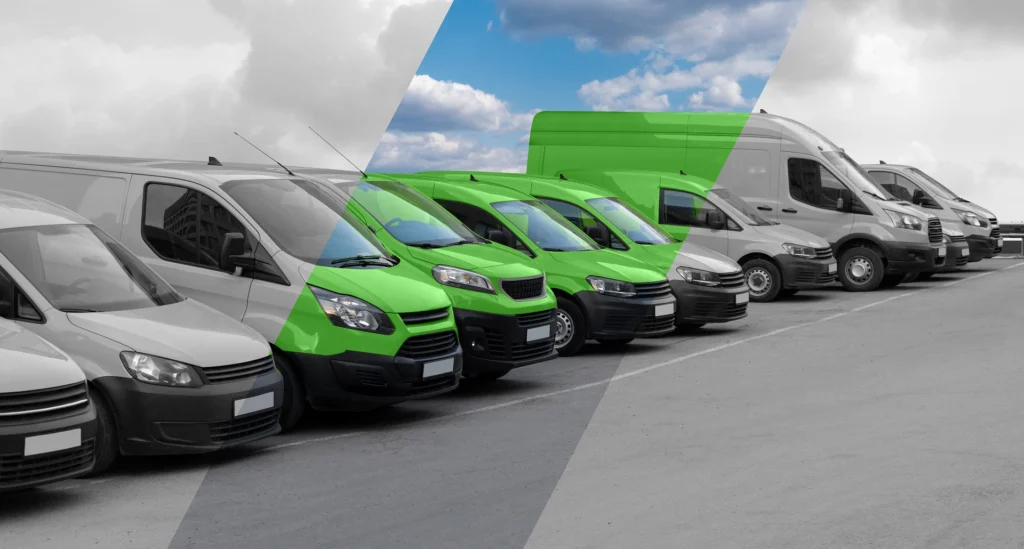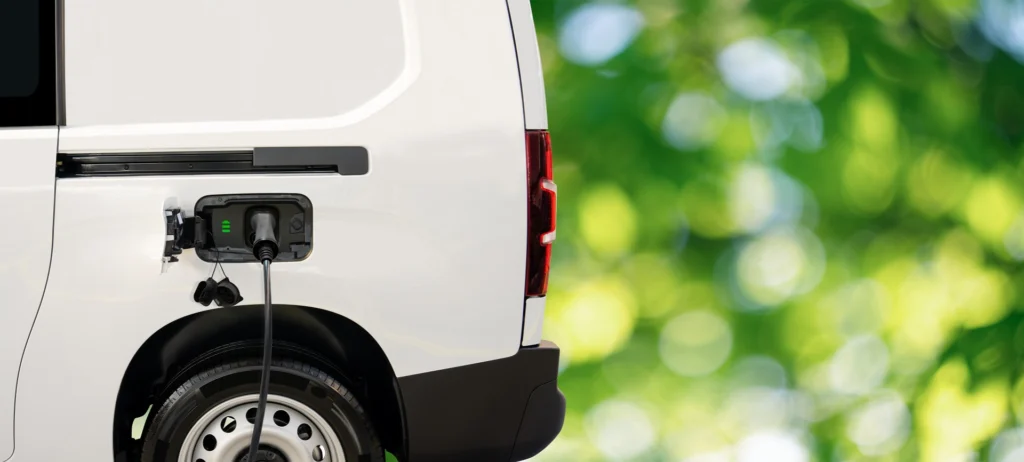Last-Mile Sustainability: How to Reduce the Carbon Footprint of Last-Mile Logistics

Wise Systems

Businesses are increasingly focused on sustainability in the last mile. And for good reason: shipping is projected to account for about 10% of global greenhouse gas emissions by 2050.
Last-mile sustainability can have a significant and positive impact on the environment, and there are a variety of ways companies can reduce the carbon footprint of their last-mile logistics operations.
In this guide, we’ll discuss the importance of improving last-mile sustainability, common challenges last-mile delivery companies encounter when implementing sustainable practices, and the essential steps to develop an effective last-mile sustainability strategy.
In this article:
- What is Last-Mile Sustainability?
- Why Improve Last-Mile Sustainability?
- Last-Mile Sustainability Challenges
- Steps to Develop an Effective Last-Mile Sustainability Strategy
- Meet Your Last-Mile Sustainability Goals with Wise Systems
- Frequently Asked Questions
What is Last-Mile Sustainability?

Sustainability in last-mile delivery refers to the adoption of environmentally friendly practices and technologies in the final stage of the delivery process, where goods are transported from a distribution center to the end customer’s location.
This phase is often the most inefficient and carbon-intensive leg of the supply chain due to the high frequency of deliveries, small batch sizes, and the urban settings in which these deliveries often occur. The focus on sustainability in this context aims to reduce the environmental impact of these deliveries.
Why Improve Last-Mile Sustainability?

The last mile of delivery is disproportionately carbon-intensive due to the high frequency of stops and the small size of deliveries. By improving sustainability, companies can significantly reduce greenhouse gas emissions, air pollution, and their overall environmental footprint (or Ecological Footprint©), making a positive impact in the fight against climate change and environmental degradation.
Making positive changes also helps companies meet their environmental, social, and governance (ESG) goals, which is important for investors, stakeholders, and for attracting and retaining talent.
Below, we’ll take a look at some of the most important environmental, economic, social, and business benefits of improving last-mile sustainability.
Improving Resource Efficiency
Improving last-mile sustainability enhances resource efficiency in several ways, making the delivery process more environmentally friendly and also more economically viable in the long term.
For example, route optimization software leverages advanced routing algorithms to significantly reduce the distance traveled by delivery vehicles, ensuring that the shortest and most efficient paths are taken. This optimization leads to a decrease in fuel consumption and vehicle wear-and-tear, conserving natural resources and extending the lifespan of delivery assets.
By consolidating multiple orders into fewer deliveries, companies can maximize the utilization of each vehicle’s cargo space, reducing the number of trips required to deliver the same volume of goods. This approach not only saves on fuel but also reduces the need for additional vehicles, lowering the resource footprint associated with manufacturing and maintaining a larger fleet.
Establishing micro-fulfillment centers, adopting electric vehicles (EVs), utilizing non-motorized delivery methods, and implementing sustainable packaging are also sustainable practices that help to improve resource efficiency.
Consumer Demand
Consumers are increasingly interested in the ethical aspects of the products they buy, including the sustainability of the supply chain. In fact, 81% of consumers prefer to purchase from companies that demonstrate a commitment to sustainability.
Companies that can demonstrate sustainable last-mile practices—such as using eco-friendly vehicles, packaging, and energy sources—build trust and credibility with their customers.
Additionally, sustainable last-mile practices can include the use of local delivery networks or micro-fulfillment centers, which can be perceived as supporting local economies and reducing transportation distances. This local focus can resonate with consumers who prefer to support businesses that contribute positively to their communities.
Regulatory Compliance

Many governments and local authorities are implementing stricter regulations on emissions, urban traffic, and pollution.
For example, many regions have set strict emission standards for vehicles, including those used in last-mile delivery. By transitioning to low-emission or zero-emission vehicles, such as electric vehicles (EVs) or bicycles, companies can ensure they meet these standards.
Cities across the globe are also implementing low-emission zones (LEZs) or ultra-low-emission zones (ULEZs) to tackle urban air quality issues. These zones restrict access to certain parts of the city for vehicles that do not meet specific emission standards. By adopting sustainable delivery methods, companies can maintain access to these crucial urban areas without incurring fines or penalties.
There are also noise and packaging regulations to consider, as well as growing regulatory oversight of environmental issues overall. Governments are continually tightening environmental standards, and early adoption of sustainable practices can provide a competitive advantage, reducing the risk of future non-compliance.
Cost Reduction
While there might be upfront costs associated with transitioning to more sustainable last-mile delivery methods, these investments often lead to long-term savings.
For example, electric vehicles, though expensive initially, have lower operating costs than traditional vehicles. Electric vehicles also generally require less maintenance than traditional vehicles because they have fewer moving parts, meaning less wear and tear.
Similarly, route optimization technologies provide efficient routing and delivery scheduling, including utilizing off-peak delivery times, which help avoid traffic congestion. This reduces fuel consumption and vehicle depreciation due to idling and prolongs delivery times, lowering operational costs.
Last-Mile Sustainability Challenges

Improving last-mile sustainability offers many benefits for businesses, but the process of implementing more sustainable practices isn’t without its challenges. Let’s take a closer look at the common challenges your business may encounter when implementing your last-mile sustainability strategy.
- High upfront costs: Transitioning to sustainable last-mile solutions, such as electric vehicles (EVs) or setting up micro-fulfillment centers, requires significant upfront investment. The cost of purchasing EVs, installing charging infrastructure, or adopting new technologies for route optimization can be substantial, making it difficult for small and medium-sized businesses (SMBs) to implement these changes.
- Infrastructure limitations: The lack of necessary infrastructure, such as EV charging stations or suitable locations for micro-fulfillment centers, can hinder the shift towards sustainable last-mile delivery. In many areas, especially outside urban centers, the infrastructure for supporting sustainable logistics is still underdeveloped.
- Balancing consumer expectations with sustainability: Customers increasingly expect fast, often same-day, delivery services, which can conflict with the objectives of sustainability, such as route optimization and delivery consolidation. Balancing consumer demand for speed with the need to reduce emissions and traffic congestion presents a considerable challenge.
- Regulatory and policy challenges: Navigating the regulatory landscape can be complex, especially as rules and incentives for sustainable practices vary widely between regions. Additionally, businesses may face challenges in adapting to new regulations or taking advantage of government incentives for sustainability.
- Technological integration: Implementing new technologies for route optimization, fleet management, or sustainable packaging requires integrating these systems with existing logistics operations. This integration can be challenging, particularly for businesses with established supply chains and delivery processes. That’s why it’s crucial to invest in a comprehensive solution like the Wise Systems delivery automation platform, which connects seamlessly with your existing last-mile ecosystem with pre-built data integrations.
- Measurement and reporting: Accurately measuring the environmental impact of last-mile delivery operations and reporting on sustainability efforts can be complex. Establishing reliable metrics and gathering data for comprehensive sustainability reporting requires resources and expertise.
- Securing supplier and partner commitments: Ensuring that suppliers and logistics partners are also committed to sustainability and capable of meeting green logistics standards is a challenge. Aligning business practices across the supply chain is necessary for a truly sustainable last-mile strategy.
- Rapid innovation: With the rapid pace of innovation in logistics and transportation technologies, there’s a risk that investments in certain vehicles or systems could become obsolete more quickly than anticipated, impacting the long-term viability of sustainability initiatives.
When integrations are well built and well implemented, they enhance and streamline the last-mile delivery process. Check out our latest blog on Wise Systems Connect and our growing partner ecosystem here! https://t.co/3At4la667o pic.twitter.com/jM9jV6b77v
— Wise Systems (@goWiseSystems) April 11, 2023
Despite these challenges, many businesses are making strides in overcoming them through innovative solutions, strategic partnerships, and by leveraging government incentives and technological advancements. The push towards last-mile sustainability is driven by both environmental responsibility and the potential for long-term cost savings and efficiency gains.
Steps to Develop an Effective Last-Mile Sustainability Strategy

Developing an effective last-mile sustainability strategy involves a comprehensive approach that integrates environmental considerations into the logistics and delivery process. Here’s a step-by-step guide to help you create and implement an effective last-mile sustainability strategy for your organization:
- Assess current operations. The first step in developing a last-mile sustainability strategy is evaluating your current last-mile delivery operations to understand your environmental footprint. This assessment should include emissions, energy use, packaging waste, vehicle efficiency, and route optimization. Understanding your starting point is crucial for setting realistic goals and identifying areas for improvement.
- Set clear sustainability goals. Based on your assessment, establish measurable sustainability goals. These could range from reducing carbon emissions by a certain percentage, increasing the use of electric vehicles, to minimizing packaging waste or improving route efficiency.
- Explore sustainable delivery options. Investigate various sustainable delivery methods that could help achieve your goals. This might include electric or hybrid vehicles, cargo bikes, drones, or even foot couriers for urban deliveries. Consider the feasibility, cost, and potential environmental impact of each option.
- Optimize delivery routes. Implement advanced routing software to ensure that delivery routes are as efficient as possible. Route optimization can significantly reduce mileage and emissions by avoiding unnecessary travel, reducing idle time, and consolidating deliveries.
- Make smart investments in sustainable vehicles and technologies. Based on your exploration of sustainable delivery options, begin investing in appropriate vehicles and technologies. This could involve purchasing electric vehicles, retrofitting existing vehicles with more efficient engines, or adopting technology solutions that support route optimization and vehicle loading efficiency.
- Implement localized fulfillment centers. If possible, use micro-fulfillment centers closer to your customers. This reduces the distance goods need to travel for last-mile delivery, cutting down on emissions and delivery times.
- Engage and train employees on sustainability policies and best practices. Ensure that your staff understands the importance of sustainability in last-mile delivery and is trained on new procedures and technologies. Employee engagement is crucial for successful implementation.
- Continuously monitor and improve. Establish metrics to monitor the performance of your last-mile sustainability initiatives. Regularly report on these metrics to internal and external stakeholders. Use the data collected to adjust your strategy as needed, continually seeking improvements.
- Collaborate with partners. It’s crucial to work with suppliers, logistics partners, and other stakeholders to further enhance sustainability throughout the supply chain. Collaboration can lead to shared savings, innovations, and a more significant overall reduction in environmental impact.
- Communicate with customers. Inform your customers about your sustainability efforts and achievements. Transparency can enhance your brand’s reputation and encourage customer loyalty. Consider offering customers sustainable delivery options, such as a choice for slower but more eco-friendly delivery.
- Stay up-to-date with regulations and innovations. Keep abreast of regulatory changes and innovations in sustainable logistics. Regulations can impact your operations, and innovations may offer new opportunities to enhance sustainability.
By following these steps, businesses can develop and implement an effective last-mile sustainability strategy that reduces their environmental impact, meets regulatory requirements, satisfies customer demand for sustainable practices, and potentially reduces costs through increased efficiency.
Meet Your Last-Mile Sustainability Goals with Wise Systems
Check out our ever-growing list of tech partners and integrations! We’re adding the list to the list daily and would love the opportunity to work with you, too. Join us! https://t.co/GqwPbLLGxy pic.twitter.com/uGKRUEBFnp
— Wise Systems (@goWiseSystems) April 13, 2023
The Wise Systems delivery automation platform offers a comprehensive solution for automating last-mile delivery processes to improve efficiency, reduce costs, and improve sustainability. Wise Systems customers reap benefits such as a 20% increase in utilization and a 15% reduction in fleet miles by leveraging innovative solutions for every stage of the delivery process, from dispatching to route optimization, strategic planning, performance management, and more.
Request a demo today to learn how Wise Systems can help your organization achieve your last-mile sustainability goals.
Frequently Asked Questions
How does last mile logistics affect the environment?
The environment is greatly impacted by last mile logistics in several ways:
- Carbon emissions: Last-mile delivery involves frequent stops and starts, inefficient routes, and idling, all of which contribute to high levels of carbon dioxide and other greenhouse gas emissions. These emissions are one of the main causes of climate change.
- Air pollution: Vehicles used for last-mile delivery, especially those powered by diesel or gasoline, release pollutants like nitrogen oxides and particulate matter. This contributes to air pollution, posing health risks in urban areas.
- Traffic congestion: With the increase in delivery vehicles, urban areas experience more traffic congestion. This leads to more idling, higher emissions per delivery, and negatively impacts the overall quality of life in cities.
- Noise pollution: The operation of delivery vehicles, especially in residential areas and during early mornings or late nights, creates noise pollution.
- Energy consumption: Inefficient last-mile delivery logistics result in excessive energy consumption, further intensifying the environmental impact.
- Packaging waste: The high volume of deliveries results in significant amounts of packaging waste, much of which is not biodegradable or recyclable, thus adding to landfill and pollution issues.
What is sustainable last mile delivery?
Sustainable last-mile delivery is all about incorporating environmentally friendly practices in the last stage of the delivery process. At this stage, goods are moved from a distribution hub to the final recipient.
The goal is to reduce the ecological footprint of delivery activities by cutting down on carbon emissions, streamlining delivery routes, using energy-efficient vehicles, and adopting sustainable packaging solutions, among other methods.
What are the environmental challenges of last-mile delivery?
One of the major environmental issues with last-mile delivery is the significant amount of carbon emissions. This is mainly because delivery vehicles do a lot of stopping and starting, travel along inefficient routes, and run on fossil fuels.
Additionally, there is a problem with excessive packaging waste, as well as increased congestion in urban areas due to more delivery vehicles on the roads.
All of these factors combined contribute to air pollution, an increase in greenhouse gas emissions, and higher energy consumption, which poses a big challenge for maintaining a sustainable environment.
Why is sustainability important in a last-mile delivery model?
Sustainability plays a vital role in the last-mile delivery system as it tackles the environmental consequences of getting goods to customers, particularly in bustling urban areas with a significant number of deliveries.
Embracing sustainable practices allows companies to diminish their carbon emissions, alleviate pollution and traffic congestion, and meet the growing customer expectation for eco-friendly services.
Additionally, sustainable approaches can bring about operational effectiveness, cost-cutting measures, and adherence to ever-changing environmental protection regulations.

